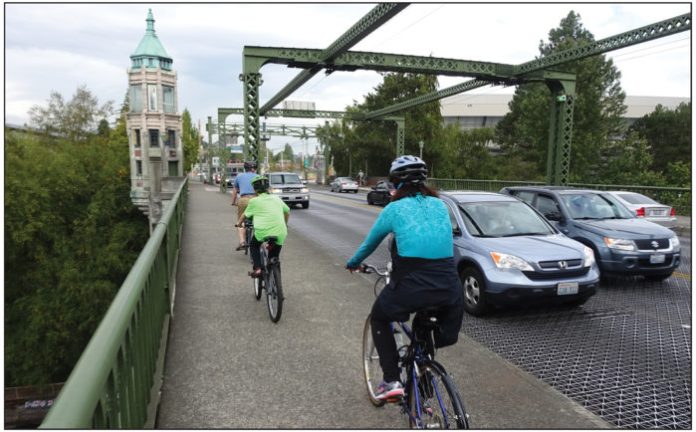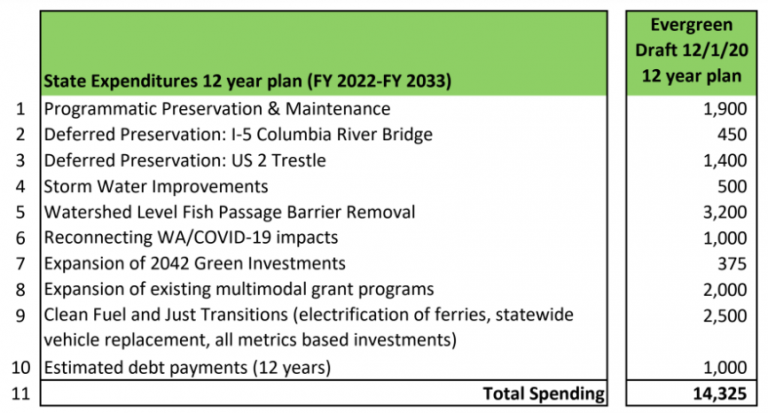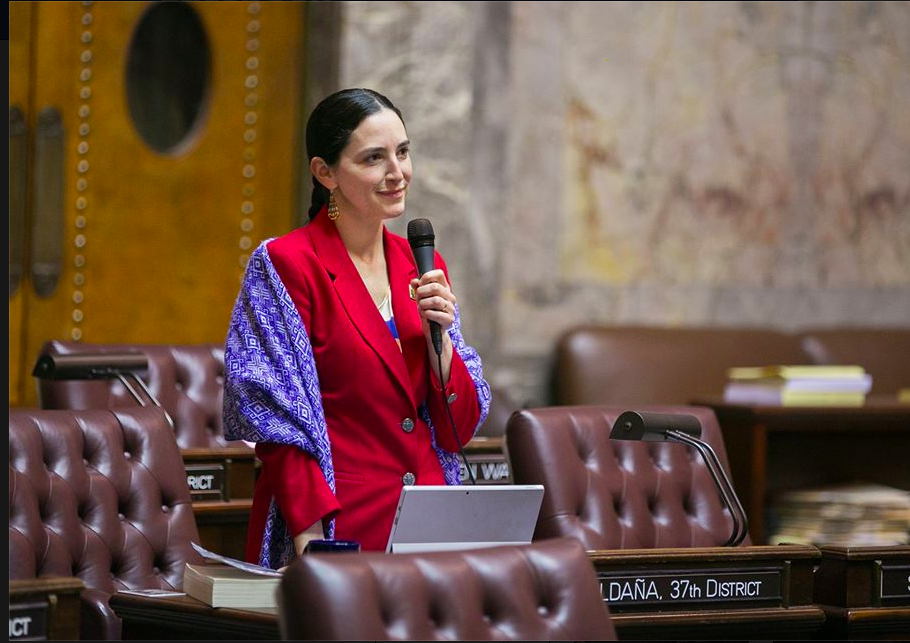
In Washington state, our leaders like to talk about environmental protection and climate action. And then it comes time to pass a transportation funding package and those values go out the window. This year was shaping up to be no different until Senator Rebecca Saldaña (D-Seattle) stepped up with a much improved proposal. State legislators would be wise to sign on to her Evergreen Plan and the broader effort to curb transportation emissions while giving Washingtonians more climate-friendly ways to get around.
While past transportation packages in the Evergreen State have focused on highway expansion, Saldaña’s would make a record-breaking investment in bike and pedestrian infrastructure, as Ryan Packer detailed in Seattle Bike Blog.
“The Saldaña proposal would span twelve years: evenly split among six two-year transportation budgets, that would amount to $333 million per biennium for transit, walking, and biking projects,” Packer wrote. “Governor Inslee’s proposed 2021-2023 budget only provided about $115 million, even with a one-time $20 million boost to pedestrian and bicycle grant program. A $2 billion investment over 12 years would absolutely be the biggest multimodal investment that has ever been made at the state level.” The Evergreen Plan also boosts investment in electrifying Washington’s ferry and transit fleets to the tune of $2.5 billion, expanding on Governor Jay Inslee’s proposal.
That may sound like a ton of multimodal investment, but the Washington State Legislature invested $10 billion in highway expansion from the $16 billion Connecting Washington, the last state transportation spending bill in 2015. If the state spends $10 billion every six years on highway expansion, a few billion for multimodal investments can only do so much mitigating climate change. The wisdom in Saldaña’s package is pulling back on highway expansion, albeit with some compromises.
Senate transportation chair Senator Steve Hobbs (D-Lake Stevens) is plodding along with the same concept he’s floated unsuccessfully in 2019 and 2020–investing heavily in pricer highway widening while giving a pittance to transit, walking, and biking. He toyed around with a small carbon tax to fund it, but seems more focused on greenwashing a highway expansion than meeting climate goals, given the pairing of incompatible initiatives. Another idea Hobbs had, by the way, was leveling a tax on bikes.
In a nod to Hobbs, Saldaña kept the US Route 2 trestle in the package, investing $1.4 billion in Hobbs’ home district and defending the decision as “preservation”–though the proposal is also aimed at widening US-2. The Washington State Department of Transportation (WSDOT) has admitted that the project would likely move the existing bottleneck from US-2 to I-5, meaning the lavish expansion would not accomplish all that much.

On the plus side, Saldaña’s proposal trims some other highway pork. “[P]rojects like $259 million to widen SR-18 in Issaquah are not included and many other projects to expand highway capacity are absent,” Packer wrote. “It also includes only $450 million for the I-5 bridge between Washington and Oregon; this is likely not going to be the full amount for the project if the latest version of the bridge includes as much highway expansion as the previous iteration, the Columbia River Crossing. Hobbs’s 2020 proposal would have allocated $3 billion for it.”

The Columbia River Crossing could be an inflection point in the making. The old WSDOT would have forced billions in freeway expansion and steamrolled the opposition with earthquake safety, greenwashing arguments, and highway myths. The new WSDOT will hopefully be more enlightened and ensure the I-5 bridge supports high-speed rail and light rail to Portland rather than expanding all the interchanges and supercharging car infrastructure like the previous proposal did.
We urge you to contact your state legislators (contact info here) to tell them to support Sen. Saldaña’s Evergreen Plan over Sen. Hobbs’ highway-focused climate delay package. We must divest from highway expansion and invest in safety, accessibility, and transit to curb transportation emissions and bring about mobility justice. Sen. Saldaña has gotten us a lot closer to that goal.
The editorial board consists of Natalie Bicknell, Stephen Fesler, Shaun Kuo, Ryan Packer, and Doug Trumm.
The Urbanist was founded in 2014 to examine and influence urban policies. We believe cities provide unique opportunities for addressing many of the most challenging social, environmental, and economic problems. We serve as a resource for promoting and disseminating ideas, creating community, increasing political participation, and improving the places we live.

